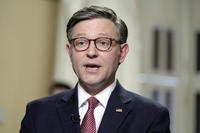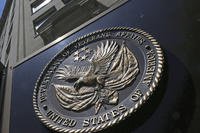A key Republican in the House on Monday recommended a 2.4 percent pay raise for military personnel in 2018 as opposed to the 2.1 percent in President Donald Trump's proposed defense budget.
Speaking on background, staffers for House Armed Services Committee Chairman Rep. Mac Thornberry, R-Texas, said the higher level would comply with "statutory requirements" for military pay increases that have at times been ignored by presidents of both parties.
The reference was to the federal mandate that pay raises should be tied to the Employment Cost Index prepared by the Bureau of Labor Statistics "unless the president cites economic concerns or a national emergency."
On the Senate side earlier this month, Sens Joni Ernst, R-Iowa, and Elizabeth Warren, D-Mass., introduced a bill that would strengthen the requirement for presidents to go by the ECI.
Related content:
- Trump Budget Calls for 2.1% Military Pay Raise in 2018
- Proposed Military Pay Charts for 2018
- Military Pay Resources
"Unfortunately, previous presidents have cited economic concerns to deny troops their pay raise while simultaneously claiming a growing economy publicly," the two senators said, noting that the 2.1 percent proposed pay raise in Trump's fiscal 2018 budget "does not match the Employment Cost Index," which would call for a 2.4 percent increase.
In a release from April, the Labor Department's Bureau of Labor Statistics noted "compensation costs for civilian workers increased 2.4 percent for the 12-month period ending in March 2017."
The pay proposal was part of Thornberry's defense budget recommendation called the "Chairman's Mark," which will serve as a guideline for House and Senate in in their deliberations on the defense budget that were expected to last through the summer.
Thornberry came down by nearly about $8.5 billion from his original call for proposal for the Defense Department's base budget, from $640 billion to $631.5 billion. The proposal also included $65 billion for Overseas Contingency Operations, the so-called "war budget to fund operations in Iraq, Syria and Afghanistan.
The total for the HASC version of the National Defense Authorization Act for the fiscal year beginning Oct. 1 would be $696.5 billion.
Last week, Thornberry said he had been moving in the direction of a total $705 billion defense budget that would have included a baseline budget of $640 billion, but that could have conflicted with a $621 billion base budget being considered by the House Budget Committee.
Aides to Thornberry said he agreed to lower his own number in return for assurances of increased defense spending in future years. Thornberry "wouldn't have put out the mark at this level if he wasn't comfortable about the trajectory of those discussions" on increases in future defense spending, an aide said on background.
Thornberry's proposal included major differences with Trump and Defense Secretary Jim Mattis on specific spending items.
For example, Mattis proposed holding the line on spending for missile defense at $9.9 billion while a study was conducted on improvements for the system, but the Thornberry proposal included a $2.5 billion increase to $12.4 billion.
Thornberry also said his proposal would address readiness shortfalls in Trump's budget request, including $7.9 billion for Aviation Readiness, $5.9 billion for increased naval presence, $5.7 billion for ground forces, and $2.3 billion for facilities maintenance.
Last week, Thornberry said that Trump was "very committed to rebuilding the military and repairing the damage," but "I think our budget does a lot more of that than the one (the White House) sent over."
-- Richard Sisk can be reached at Richard.Sisk@Military.com.





























